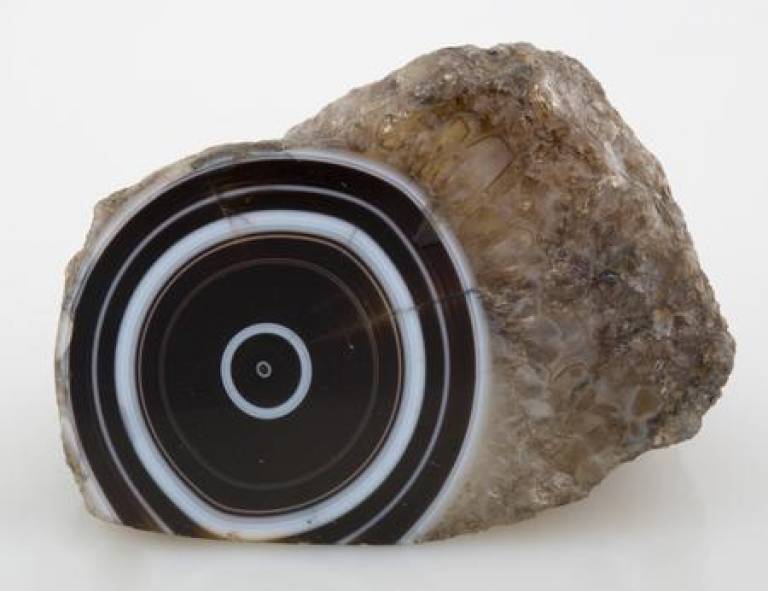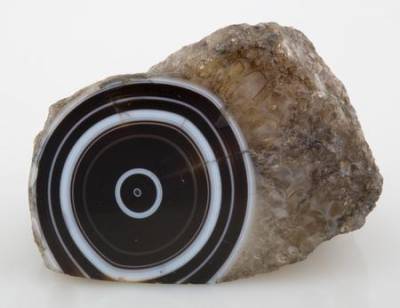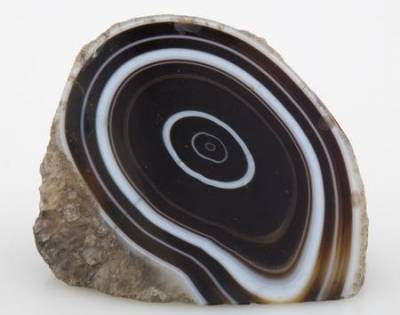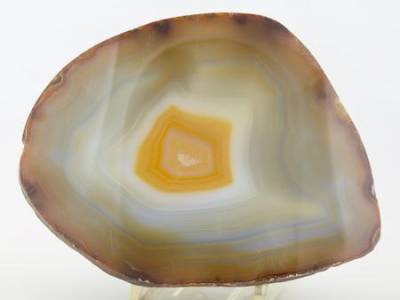Agate
3 March 2014

This sample from UCL's geology collections, is a fine example of agate, a curious mineral which forms mainly in ancient volcanic lava flows.
Over long periods of time, water with traces of silica in it flows through cracks, voids or bubbles in a lava flow, leaving behind a thin deposit. Gradually, like limescale building up in a kettle, the silica forms layers inside the bubble. From the outside, agates look like very ordinary rocks, but cutting them open reveals layer upon layer of deposited silica.
Different impurities in the silica lead to bands of different colours forming in the agate. The first two specimens shown here have simple rings of dark brown and white, but the colours can vary enormously, as seen in a third specimen below.
In these samples, the silica has entirely filled the cavity, but some specimens still have a hole in the centre.
As silica is very hard - it is the same chemical as quartz, glass and sand - the resulting rocks are very durable, and survive even after the lava flow they formed in has eroded away.
UCL has a large collection of geology specimens, the oldest of which date back to 1855. Used mainly for teaching by the Earth Sciences department, they are also displayed to the public in the Rock Room between 1pm and 3pm every Friday.
Photo credit: UCL Geology Collections
Links
High resolution images
Photo 1
Photo 2
Photo 2
These images can be reproduced freely providing the source is credited
 Close
Close







